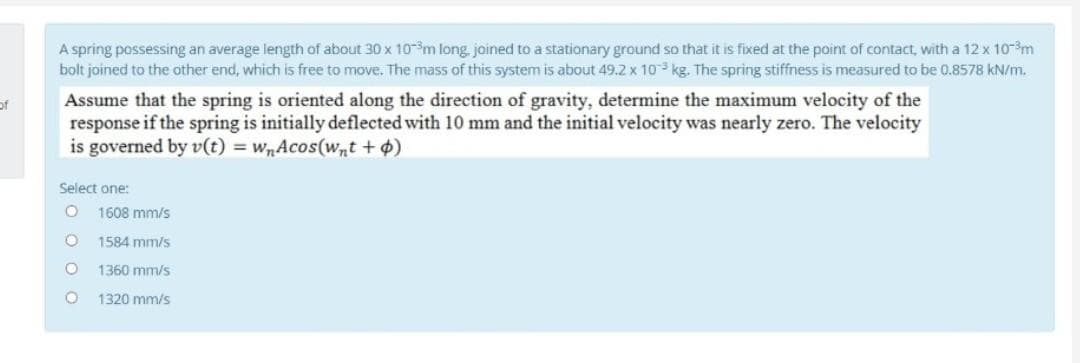bolt joined to the other end, which is free to move. The mass of this system is about 49.2 x 10 kg. The spring stiffness is measured to be 0.8578 kN/m. Assume that the spring is oriented along the direction of gravity, determine the maximum velocity of the response if the spring is initially deflected with 10 mm and the initial velocity was nearly zero. The velocity is governed by v(t) = wnAcos(wnt + o) Select one: O 1608 mm/s 1584 mm/s 1360 mm/s 1320 mm/s
Simple harmonic motion
Simple harmonic motion is a type of periodic motion in which an object undergoes oscillatory motion. The restoring force exerted by the object exhibiting SHM is proportional to the displacement from the equilibrium position. The force is directed towards the mean position. We see many examples of SHM around us, common ones are the motion of a pendulum, spring and vibration of strings in musical instruments, and so on.
Simple Pendulum
A simple pendulum comprises a heavy mass (called bob) attached to one end of the weightless and flexible string.
Oscillation
In Physics, oscillation means a repetitive motion that happens in a variation with respect to time. There is usually a central value, where the object would be at rest. Additionally, there are two or more positions between which the repetitive motion takes place. In mathematics, oscillations can also be described as vibrations. The most common examples of oscillation that is seen in daily lives include the alternating current (AC) or the motion of a moving pendulum.

Step by step
Solved in 2 steps with 2 images








